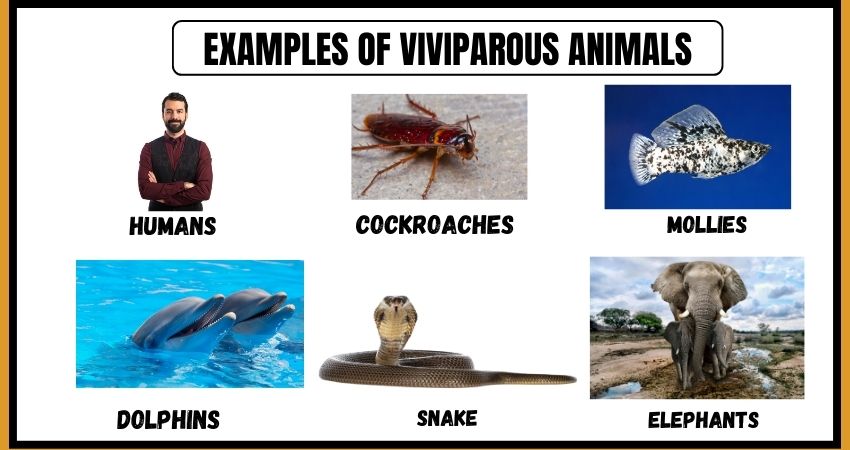Viviparous animals exhibit a unique reproductive strategy where offspring develop inside the mother’s body, receiving nourishment and protection until they are born. This remarkable phenomenon is found in a variety of animals across the animal kingdom, from mammals like kangaroos and humans to reptiles like vipers and boas.
Other examples of viviparous animals include sharks, seahorses, and some species of lizards and fish. Each species has its unique adaptations to this reproductive strategy, making viviparity a fascinating area of study for biologists and zoologists alike.
Characteristics of Viviparous Animals
Viviparous animals differ from oviparous (egg-laying) and ovoviviparous (developing eggs inside the mother) species by giving birth to live offspring. The live birth process involves intricate physiological adaptations that ensure the survival of the offspring.
Examples of Viviparous Animals
Here are the examples of viviparous animals:
Humans (Homo sapiens)
Humans, the apex species on Earth, exhibit viviparity. The reproductive process involves internal gestation, and childbirth typically occurs after a nine-month gestation period.
Dolphins (Delphinidae)
Dolphins, highly intelligent marine mammals, exemplify viviparity. The live birth of dolphin calves occurs in water, and mothers provide extensive care and protection to their offspring.
Dogs (Canis lupus familiaris)
Domestic dogs, descendants of wolves, showcase viviparity. Dog pregnancies last around two months, leading to the birth of live puppies that require maternal care.
Elephants (Elephantidae)
Elephants, the largest land mammals, undergo an impressive gestation period of about 22 months. Viviparity in elephants results in the birth of a single calf, which is cared for by the entire herd.
Boa Constrictor (Snake) (Boa constrictor)
Boa constrictors, large constrictor snakes, are viviparous. The reproductive process involves internal fertilization, and live birth typically yields a litter of baby snakes.
Garter Snake (Thamnophis sirtalis)
Garter snakes, common in North America, are viviparous reptiles. They give birth to live young without the use of eggs, showcasing the diversity of reptilian reproductive strategies.
Mollies (Fish) (Poecilia sphenops)
Mollies, popular aquarium fish, demonstrate viviparity. Female mollies give birth to live fry after internal fertilization, contributing to their appeal in the aquarium hobby.
Guppies (Fish) (Poecilia reticulata)
Guppies, another common aquarium fish, exhibit viviparity. The females give birth to live fry, and their rapid reproductive rate makes them fascinating subjects for study.
Seahorses (Hippocampus)
Seahorses are unique among fish, with males bearing the responsibility of pregnancy. Viviparity in seahorses involves the transfer of eggs to a specialized pouch on the male’s abdomen, where they hatch and develop.
Cockroaches (Blattodea)
Cockroaches, often associated with resilience, showcase viviparity. Unlike their oviparous relatives, some cockroach species give birth to live nymphs, contributing to their adaptability and survival strategies.
FAQs related to Examples of Viviparous Animals
Are all mammals viviparous?
No, not all mammals are viviparous. Some, like monotremes (platypus and echidna), lay eggs.
What is the significance of viviparity in seahorses?
Viviparity in seahorses challenges traditional gender roles, as males carry and give birth to offspring.
How do viviparous animals adapt to their environment?
Viviparous animals often exhibit specific adaptations to ensure the survival of their offspring, such as internal gestation.
How does viviparity contribute to scientific research?
Studying viviparity provides valuable insights into reproductive biology, evolution, and the broader understanding of life processes.

